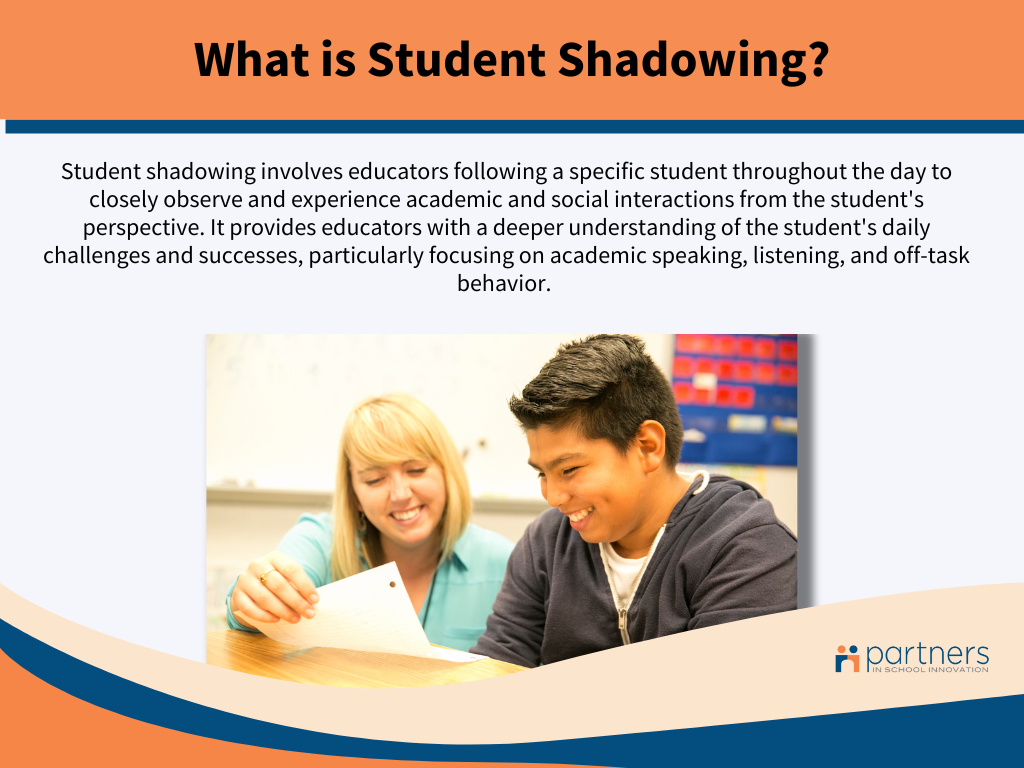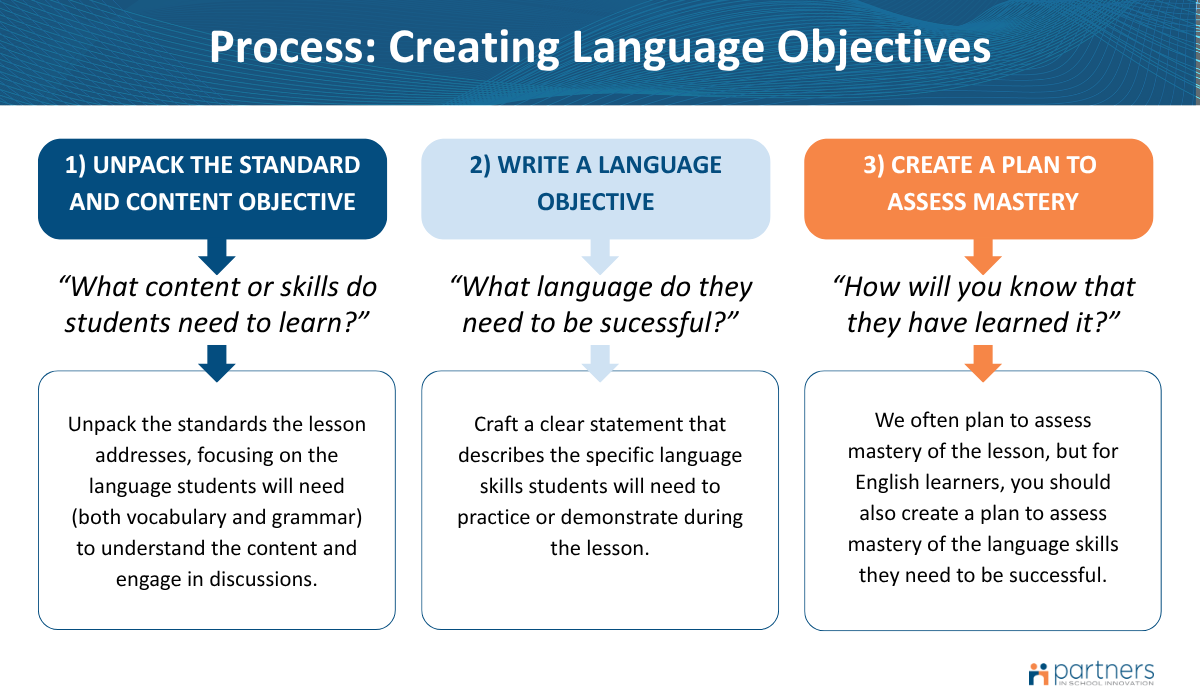Understanding and Supporting Multilingual Learners: A Guide to Instructional Differentiation
At Partners in School Innovation (PSI), we’ve seen firsthand the incredible potential of Multilingual Learners (MLLs) come to life when they receive the support they need to thrive. We've also seen the unique challenges these students face in classrooms that too often get in the way of their success.
MLLs frequently don’t get the tailored support they need, not because educators lack the passion to support them, but because they often lack the tools and systems to provide it effectively. At Partners in School Innovation (PSI), we believe every student deserves access to rigorous instruction, and that includes ensuring MLLs succeed across all content areas.
This article is the first in a series about supporting and differentiating instruction for Multilingual Learners (MLLs), and it’s designed to guide educators through actionable strategies they can use, or share with their peers, to differentiate instruction and help bridge the gap between intention and impact.
See the order of the articles in this series listed here:
(You're here!) - Understanding and Supporting Multilingual Learners: A Guide to Differentiating Instruction
Seeing and Hearing Students: Shadowing and Elevating Multilingual Learner Voices
Structured Language Practice: Strategies for Differentiating Instruction for Multilingual Learners
Let’s start by understanding why this work is so critical and where you can begin.
The Challenges Facing Multilingual Learners (MLLs) and English Language Learners (ELLs)
For MLLs, school can sometimes feel like navigating two worlds. They’re mastering new content while also developing the language skills they need to express themselves and engage. Without intentional support, this dual challenge can lead to frustration, disengagement, or feeling left behind.
Some common barriers we’ve seen MLLs face and express include:
Limited opportunities to practice academic language in meaningful ways.
Instruction that doesn’t connect with or build on their cultural and linguistic assets.
Feedback that feels unclear or discouraging, leaving them unsure of how to improve.
These challenges highlight the urgency of creating equitable learning environments where MLLs feel seen, valued, and supported.
Where to Begin With Supporting ELLs and MLLs
Before jumping into tactical differentiation strategies in planning and instruction, it’s important to first take a step back and truly understand who your multilingual learners are and what supports they currently have access to.
This means looking at your MLL population as a whole. Who are your multilingual learners? What levels of English proficiency are represented? Which students are close to reclassification? What systems—like designated or integrated English Language Development (ELD), push-in or pull-out supports, or dedicated instructional blocks—are already in place to help them succeed?
Related Content: How a San Jose School Transformed Their Support for Multilingual Learners
When educators start with this systems-level view, it becomes easier to set meaningful goals and align resources. From there, you can zoom in to understand individual students’ daily experiences, noticing both the barriers that may be limiting their success and the opportunities to strengthen support. Taking this systems-level view first is core to our approach at Partners in School Innovation, because it helps leaders and teachers get clear on the needs of their multilingual learners and set meaningful goals before moving into more targeted instructional support.
One way to begin that deeper exploration into how to better support MLLs is by using two practices we often introduce early in our coaching work with educators: MLL shadowing and empathy interviews. Together, these two practices can give you a direct window into students’ day-to-day reality, so you can connect your big-picture goals with their lived experience.
What is MLL Shadowing?
During MLL shadowing an educator follows an MLL student through their day, observing their interactions, their engagement, and how they navigate the school environment. You might sit in on lessons, watch how the student participates in group work, and notice when they seem engaged or when they might be struggling.
The goal here is to gain a deeper understanding of students’ daily reality and identify where they may be experiencing challenges. These firsthand observations often reveal gaps between lesson plans and students’ actual experience (Soto, Shadowing Multilingual Learners).
Image description: An infographic outlining the definition of student shadowing accompanied by an image of a teacher discussing schoolwork with a student.
What Are Empathy Interviews?
Once you’ve observed students in class through shadowing, the next step is to hear directly from them. Empathy interviews are one-on-one conversations with the students that were shadowed where they share their thoughts, feelings, and school experiences in their own words.
This conversation shouldn't feel formal. It's really about creating a safe space for students to open up and help you see the classroom from their perspective in a way that data or test scores never could.
For example, a student might share that they avoid raising their hand because they’re worried about saying the wrong thing in English. Or they might tell you that group work feels stressful because they don’t know how to jump into the discussion.
What’s powerful about empathy interviews is the way they reveal the “why” behind what you observed during shadowing. They help you connect the dots and uncover unspoken challenges that might otherwise go unnoticed (Nelsestuen & Smith, Empathy Interviews, Learning Forward).
Why Use These Practices Together?
In short, these practices are foundational for this work because they remind us that change starts with understanding. By taking the time to see and hear multilingual learners, we can create classrooms that truly reflect their needs.
If you’re curious about how to implement these practices, read the next blog in this series which also includes resources and templates you can use to get started. Read it here: “Seeing and Hearing Students: Shadowing and Elevating Multilingual Learner Voices.”
Beginning to Support and Differentiate Instruction for English Language Learners (ELLs) and Multilingual Learners
After understanding your students’ perspectives and experiences, the next step is putting that knowledge into action. Differentiation means tailoring instruction to meet the diverse needs of students, ensuring that all learners can access rigorous content and grow academically. For multilingual learners (MLLs), this means providing targeted support that builds 1) their language skills and 2) their ability to engage with the content and concepts being taught.
For multilingual learners (MLLs) and English language learners (ELLs), differentiation is especially critical to help them engage with academic content while also developing their language skills.
One way to ensure instruction is differentiated is by clearly identifying the language skills students need to master alongside their content objectives.
Language Objectives & Explicit Vocabulary Instruction
Language objectives are a tool educators can use to ensure they’re differentiating instruction for MLLs and ELLs. These are objectives that are separate from, but aligned with, the overall content objective of a lesson. A language objective is an objective that clarifies the specific academic language skills students need to learn to fully engage with the lesson and demonstrate their understanding. Making a habit of creating language objectives along with every content objective ensures that educators are assessing mastery of both the lesson’s content and the language skills needed to access it.
For example, during a history lesson, the content objective might be for students to understand the causes of the American Revolution. The language objective could then focus on helping students use cause-and-effect sentence structures, such as, “_____ caused _____ because _____.”
When this language objective is paired with explicit vocabulary instruction—like introducing and practicing key terms like "revolution," "taxation," or "representation"—educators leading the lesson can make learning more accessible and meaningful for multilingual learners.
Image description: An infographic outlining the three steps to creating a language objective. The steps are: 1) Unpack the standard and content objective 2) Write a language objective 3) Create a plan to assess mastery
In another article in this series, Creating Language Objectives, we cover learning objectives and explicit vocabulary instruction more thoroughly, including frameworks and templates for creating language objectives and infusing explicit vocabulary instruction into lessons.
Structured Language Practice
Of course, knowing the language is only the first step. Students need structured opportunities to practice using it. Structured language practice gives MLLs a safe, purposeful environment to build confidence and fluency in speaking, listening, and writing in English.
Activities like think-pair-share, sentence frames, and guided discussions are effective ways to encourage academic conversations. When students are given tools and time to engage in meaningful dialogue, they build both their language skills and their confidence to succeed academically.
In the Structured Language Practice article in this series, you’ll find a deeper look at how to create meaningful opportunities for MLLs to engage in academic discussions, strengthen their language skills, and get the support they need to fully participate in classroom learning.
Ready to Take the Next Step?
If you’re ready to take these steps further, we’re here to help. Partners in School Innovation offers hands-on support for schools and districts committed to creating equitable learning environments for all students, including MLLs and English language learners. Contact our team to explore how we can support your goals and help you take meaningful steps toward equity.
You can also access more of our professional learning resources below:
Join Our Online Community of Educators
Collaborate with over 650+ equity-focused education leaders sharing resources, ideas, and inspiration every week. This community connects you with peers navigating the same challenges and trusted leaders dedicated to solving systemic inequities.
Join the online community here.
Explore Online Professional Development Courses for Educators
Our on-demand, self-paced courses are designed by leading experts and focus on equity-driven strategies. These include curated activities, opportunities to practice, and space for reflection.
Popular courses include:
Leading Improvement Cycles
From Root Causes to Grassroots Action
Data for Liberation
Browse the entire course catalog here.
We also create custom courses for schools and districts. Contact our team if you’d like to develop one tailored to your team’s unique needs. Let’s work together to make equity in education a reality.


